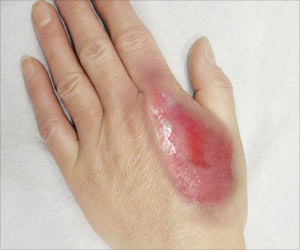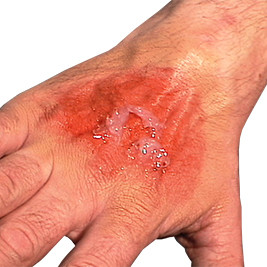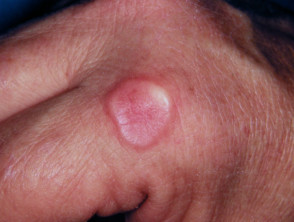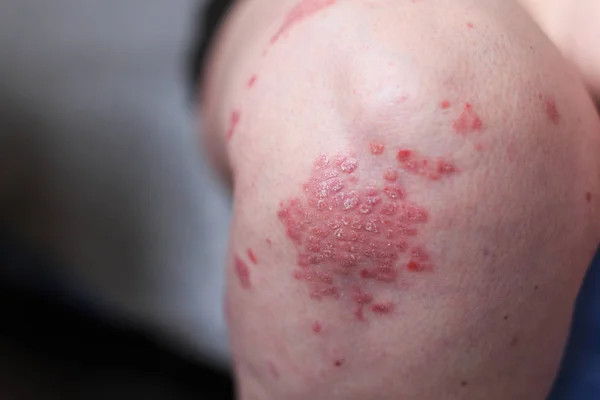Definition
Burns are tissue injuries caused by heat, overexposure to the sun, radiation, and chemical or electrical contact. The word "burn" refers to more than just the burning sensation this injury has caused. Burns are defined as a significant skin injury that damages the skin cells. Depending on the location and intensity of the skin injury, burns can be a minor medical concern or a life-threatening emergency. Burns are one of the most common household injuries, particularly among youngsters, where the majority of burns are unintentional. Every day, more than 300 children get emergency burn care, and about 500,000 people visit the emergency room with burn injuries.
Causes
Burns are the result of:
- Fire
- Hot liquids or steam
- Hot metal or glass
- Electrical currents
- Radiation, such as that from X-rays
- Sunlight or other sources of ultraviolet radiation, such as a tanning bed
- Chemicals such as strong acids, paint thinner or gasoline
- Contact with hot surfaces
Risk factor
Skin burns can generally happen to anyone. Some factors that may increase your risk of developing skin burns include:
- Gender. Based on research data, females have slightly higher rates of death from burns compared to males. The higher risk for females is associated with open-fire cooking or inherently unsafe cookstoves, which can ignite loose clothing and injure the skin.
- Age. Along with adult women, children are particularly vulnerable to burns. Burns are the fifth-most common cause of non-fatal childhood injuries. While a significant risk is improper adult supervision, a considerable number of burn injuries in children result from child maltreatment.
- Occupations that increase exposure to fire, such as working in factories
- Underlying medical conditions, including epilepsy, peripheral neuropathy, and physical and cognitive disabilities
- Alcohol abuse
- Smoking habit
- Easy access to chemicals used for assault (such as in acid violence attacks)
- Use of kerosene (paraffin) as a fuel source for non-electric domestic appliances
- Inadequate safety measures for liquefied petroleum gas and electricity
Symptoms
Burn symptoms vary depending on how deep the skin damage is. It can take a day or two for the signs and symptoms of a severe burn to develop. Health providers classify burns by degrees of severity, including:
First-degree Burns
This minor burn affects only the outer layer of the skin (epidermis). It may cause redness and pain. The skin surface may still feel smooth to the touch. First-degree burns are mild, like most sunburns, or superficial burns (affecting only the skin's outermost surface). Usually, they heal in 3 to 6 days without scarring.
Second-degree Burns
This type of burn affects both the epidermis and the second layer of skin (dermis). It may cause swelling and red, white or splotchy skin. Blisters (water-filled pustules) may develop, and pain can be severe. Some blisters may burst and open, making the burn appear wet. Over time, a thick, soft, scab-like tissue called fibrin exudate will form, which may develop over the wound.
This burn takes over three weeks to heal, but most can heal within 7 to 21 days without scarring, but often with pigmentary changes in the skin. However, second-degree burns can cause scarring.
Third-degree Burns
This burn injury affects all three skin layers: the epidermis, dermis, and fat. The burn also destroys hair follicles and sweat glands. Burned skin may be black, white, or red with a leathery appearance. The skin may look rough. Third-degree burns damage nerve endings, causing numbness, so you probably won’t feel pain in the burn.
Diagnosis
In diagnosing skin burns, the doctor will start by interviewing you. The doctor will ask what symptoms you are experiencing, how the burn mechanism occurs, how long the symptoms have been felt, whether the burn is accompanied by pain, etc. Then, the doctor will perform a physical examination by looking directly at the affected skin area. The doctor will determine the degree of skin burns or their severity based on the physical examination. The doctor will estimate the percentage of the body affected by burns and their depth, and classify the burns as follows.
Mild degree
First and second-degree burns that affect less than 10% of the body's skin surface are considered mild and rarely require hospitalization.
Moderate degree
Second-degree burns that affect about 10% of the body's skin surface are classified as moderate. Burns on the hands, feet, face, or genitals can also range from moderate to severe.
Severe degree
Third-degree burns that affect more than 1% of the body's skin surface are considered severe.
The doctor may also recommend laboratory tests, X-rays, or other diagnostic procedures if other injuries are suspected.
Management
Burn treatment should be tailored according to the severity and cause of the burn. It is essential to keep all burns clean and to apply appropriate dressings.
Treatment includes:
1. First-degree burns
To treat the first-degree burn, run cold water over the affected area. Don't apply ice. Use aloe vera gel for sunburns. For thermal burns, the doctor will apply antibiotic cream and gauze. Over-the-counter pain medication may help.
2. Second-degree burns
Treatment for first and second-degree burns is similar. The doctor may prescribe a more potent antibiotic cream, like silver sulfadiazine, to kill bacteria. Elevating the burned area can reduce pain and swelling.
3. Third-degree burns
These burns can be life-threatening and often require the use of skin grafts. Skin grafts replace damaged tissue with healthy skin from another uninjured part of the patient's body. The area where the skin graft is taken usually heals on its own. If the patient doesn't have enough skin for grafting, a temporary graft source can come from a deceased donor or an artificial source; however, the patient's skin will eventually need to replace this substitute. Treatment involves administering extra fluids (usually given intravenously with an IV) to maintain stable blood pressure and prevent shock and dehydration.
Complications
Complications of deep or widespread burns can include:
- Bacterial infection, which may lead to a bloodstream infection (sepsis)
- Fluid loss, including low blood volume (hypovolemia)
- Dangerously low body temperature due to excessive evaporation from the injured skin tissue (hypothermia)
- Breathing problems from the intake of hot air or smoke
- Scars or ridged areas caused by an overgrowth of scar tissue (keloids)
- Bone and joint problems, such as when scar tissue causes shortening and tightening of the skin, muscles or tendons (contractures)
Prevention
Burns have many accidental causes. You can take these steps to reduce the risk of burns:
- Wear sunscreen
- Set your home’s water heater below 48 degrees Celsius
- Always test the water in a shower or bath before getting or bathing a child
- Store chemicals and matches safely
- Don’t hold a child when you’re near hot objects, such as the stove
- Set safeguards around a fireplace and never leave a child unattended
- Install and regularly test smoke detectors in your home
- Stock your home with fire extinguishers and know how to use them
When to see a doctor?
Call your doctor if you experience:
- Burns on the hands, feet, face, or genitalia
- Burns that don’t improve after two weeks
- Severe pain
- Fever
- Yellow or green discharge or other signs of infection
Looking for more information about other diseases? Click here!
- dr Hanifa Rahma
Burns. (2020). Retrieved 11 Mei 2022, from https://www.mayoclinic.org/diseases-conditions/burns/symptoms-causes/syc-20370539
Burns. (2020). Retrieved 11 Mei 2022, from https://my.clevelandclinic.org/health/diseases/12063-burns
DerSarkissian, C. Thermal Burns Treatment. (2022). Retrieved 11 Mei 2022, from https://www.webmd.com/first-aid/thermal-heat-or-fire-burns-treatment
Kahn, A. Burns: Types, Treatments, and More. (2019). Retrieved 11 Mei 2022, from https://www.healthline.com/health/burns
Wedro, B. First Aid for Burns. Retrieved 11 Mei 2022, from https://www.medicinenet.com/burns/article.htm
WHO. Burns. (2018). Retrieved 11 Mei 2022, from https://www.who.int/news-room/fact-sheets/detail/burns











